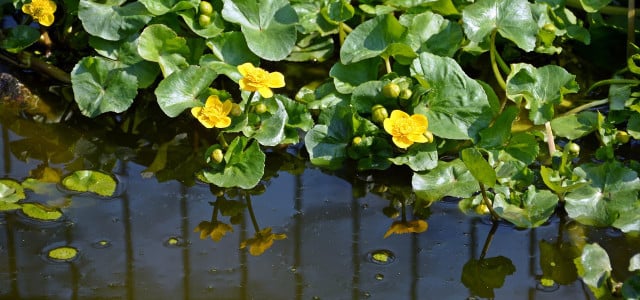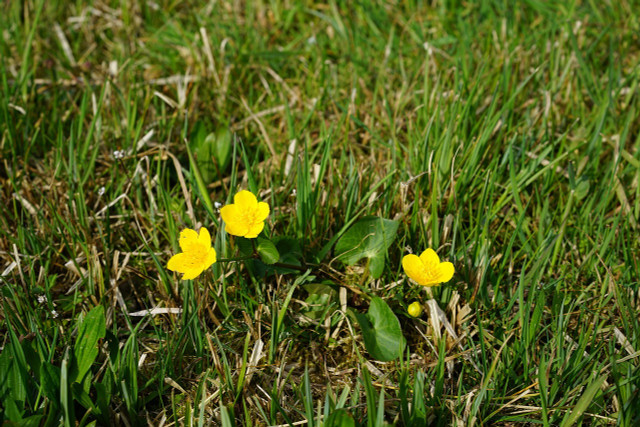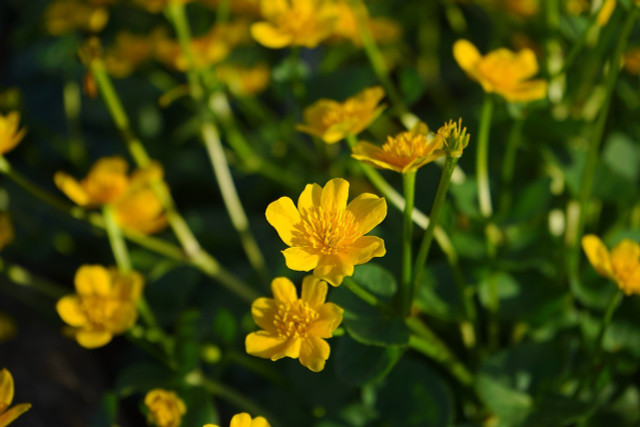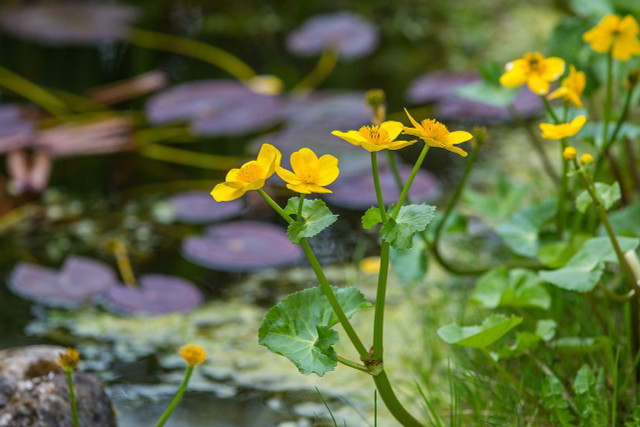
The marsh marigold adds bright yellow splashes of color to your garden. Here you can learn how to plant and care for this plant, which often grows in ponds.
The marsh marigold is one of the hardy perennials. It blooms from March to June. During this time, marsh marigold also serves as a bountiful food source for bees and other insects.
Because the plant prefers to grow in moist soil, you’ll often find it near ponds and wetlands. As wetlands in the wild are increasingly drained, the natural population of marsh marigold is already severely threatened in some states. By planting it in your garden, you can preserve the marsh marigold.
Contents
The ideal location for the marsh marigold

The marsh marigold needs a lot of moisture to thrive. That’s why it feels most at home around ponds and streams. If you have a garden pond, you can easily plant marsh marigolds in the shore area of it. Changing water levels don’t bother the plant, just make sure that the soil never dries out too much.
Find the marsh marigold a sunny to semi-shady spot, because if there is too little light, it will only sprout misshapen, long shoots. You can also combine the perennial very well with ferns.
This is how you plant the marsh marigold

Once you’ve found the marsh marigold a suitable location, all you need to do is follow these tips to ensure it grows well and feels at home in your natural garden.
The right time: as an aquatic plant, it’s best to put the marsh marigold in the ground in the spring.
The right soil: The marsh marigold needs a substrate that is permanently moist. If you plant it near a pond, make sure that the soil is always well soaked. Marsh marigolds also need a lot of nutrients, so loam or clay soil is best, which you enrich with some humus.
Proper planting: If you want to plant marsh marigold in your garden pond, you should use a planting basket. This way you can move the plant at any time and also prevent your fish from chewing on the roots of the marsh marigold while looking for food. It is best to place the plant at the edge of the pond.
Attention: Please never pick marsh marigolds in the wild, as this will unnecessarily stress the already small natural population. It is best to buy the young plants in the nursery.
Properly care for marsh marigolds

The marsh marigold is a very robust and easy to care for plant. If it grows in a moist location, you will have to take care of it quite little. However, you should still follow some care tips:
- Watering: If the marsh marigold is in a pond, you don’t need to water it at all. Only if you planted it outdoors should you water the perennial regularly, preferably with rainwater.
- Fertilize: In the pond, it is better not to fertilize the marsh marigold, as the nutrients will also cause more algae to form in the water. In the bed, on the other hand, you can safely provide the plant with organic fertilizer in the spring, preferably using compost or horn shavings.
- Pruning: As a rule, you do not have to cut marsh marigolds. In the fall, the perennial dies above ground and retreats to the rootstock over the winter.
- Propagation: This hardy perennial usually reproduces all by itself via its buoyant seeds. Of course, you can also divide large plants with a spade and then plant the sections in the ground.
- Pests: You don’t have to worry much about pests with the marsh marigold, as it is very resistant. Powdery mildew can only occur if you have placed the plant in a location that is too dry. Remove the affected leaves and then move the marsh marigold to moister soil as soon as possible.

